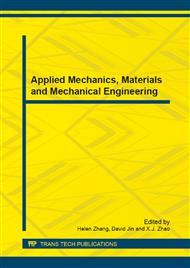p.292
p.296
p.301
p.305
p.310
p.314
p.319
p.323
p.328
Steady Motions Performance of an Underwater Glider with Pump on the Vertical Plane
Abstract:
The primary aim of research is to improve the speed of underwater glider to overcome the influence of ocean currents. In the paper, an autonomous underwater glider with pump was developed, and its vertical plane motion equations were established. In addition, the glider’s vertical plane motions were simulated. The results show, compared with no thrust, when the amount of volume change is 0.8L and the pump jet thrust is 15N, the glider’s resultant velocity and its horizontal velocity are double. When the pump thrust increases to 40N, the glider’s resultant velocity and its horizontal velocity are triple. It has also been confirmed that there is a best neutral buoyant pitch angle that can make the glider’s horizontal velocity reach the maximum in a different amount of volume change.
Info:
Periodical:
Pages:
310-313
Citation:
Online since:
August 2013
Authors:
Keywords:
Price:
Сopyright:
© 2013 Trans Tech Publications Ltd. All Rights Reserved
Share:
Citation:


